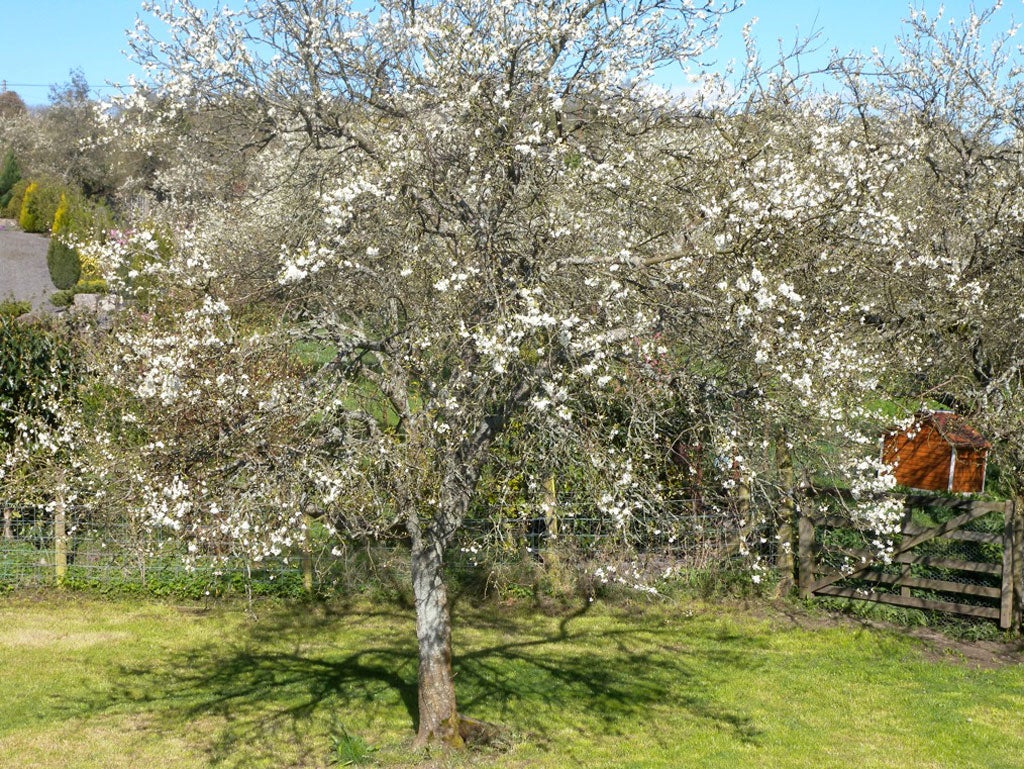On The Road: For a true taste of spring, try the Lakeland damsons
David Atkinson in Cumbria

Your support helps us to tell the story
From reproductive rights to climate change to Big Tech, The Independent is on the ground when the story is developing. Whether it's investigating the financials of Elon Musk's pro-Trump PAC or producing our latest documentary, 'The A Word', which shines a light on the American women fighting for reproductive rights, we know how important it is to parse out the facts from the messaging.
At such a critical moment in US history, we need reporters on the ground. Your donation allows us to keep sending journalists to speak to both sides of the story.
The Independent is trusted by Americans across the entire political spectrum. And unlike many other quality news outlets, we choose not to lock Americans out of our reporting and analysis with paywalls. We believe quality journalism should be available to everyone, paid for by those who can afford it.
Your support makes all the difference.Spring has come to Cumbria's Lyth Valley. The rural enclave between Kendal and Windermere is transformed for a fortnight each year by an explosion of snow-white damson blossom. I've timed my visit perfectly. In a field outside the village of Crosthwaite on a crisp spring morning, the blossom cascades around me like the first flakes of winter. Daffodils and primroses add splashes of colour. Beyond the farm lies Underbarrow, verdant and alive, while Kentmere sports a heavy frost on the tops of its fells.
"It's like a snowstorm," says John Holmes, vice chairman of the Westmorland Damson Association. "Short lived, but glorious."
Local folklore suggests either the Romans first brought damsons to the valley from Damascus in AD200, or monks coming to establish Furness Abbey from Ireland in the 12th century. Either way, the hardy, plum-like fruit took to the tough conditions of the Lakeland fells, and the first ever records of damsons sold at Kendal market date from 1780.
Today, some 100 acres of the valley are under orchard, producing 20 tons of damsons each year during the September harvest. Westmorland damsons have, say locals, a distinct, nuttier flavour.
The damson orchards fell into decline after the Second World War, but the Westmorland Damson Association (lythdamsons. org.uk) revived traditional cultivation in 1996, establishing the Damson Day festival soon after.
The annual event is, I find, part community fair, part country show. At the festival showground at Low Farm I peruse the damson-inspired goodies from local producers, chutneys, beers and even gin, before taking a walk through the orchards.
Later that evening at Crosthwaite's Punch Bowl Inn (the-punchbowl.co.uk), I tuck into a dinner of slow-roast pork with black pudding and damson purée, followed by a damson soufflé, washed down with damson gin.
"I like the tartness and the versatility of the damson for cooking," says the head chef, Scott Fairweather, recently voted Cumbria Young Chef of the Year. "They're ideal for pork and game, plus preserving as jams and chutneys."
I knew nothing about damsons until my stay in the Lyth Valley. But, from this day on, I will always think of damsons as the true taste of spring.
Footprint's Lake District with Kids is available now, £13.99.
Join our commenting forum
Join thought-provoking conversations, follow other Independent readers and see their replies
Comments